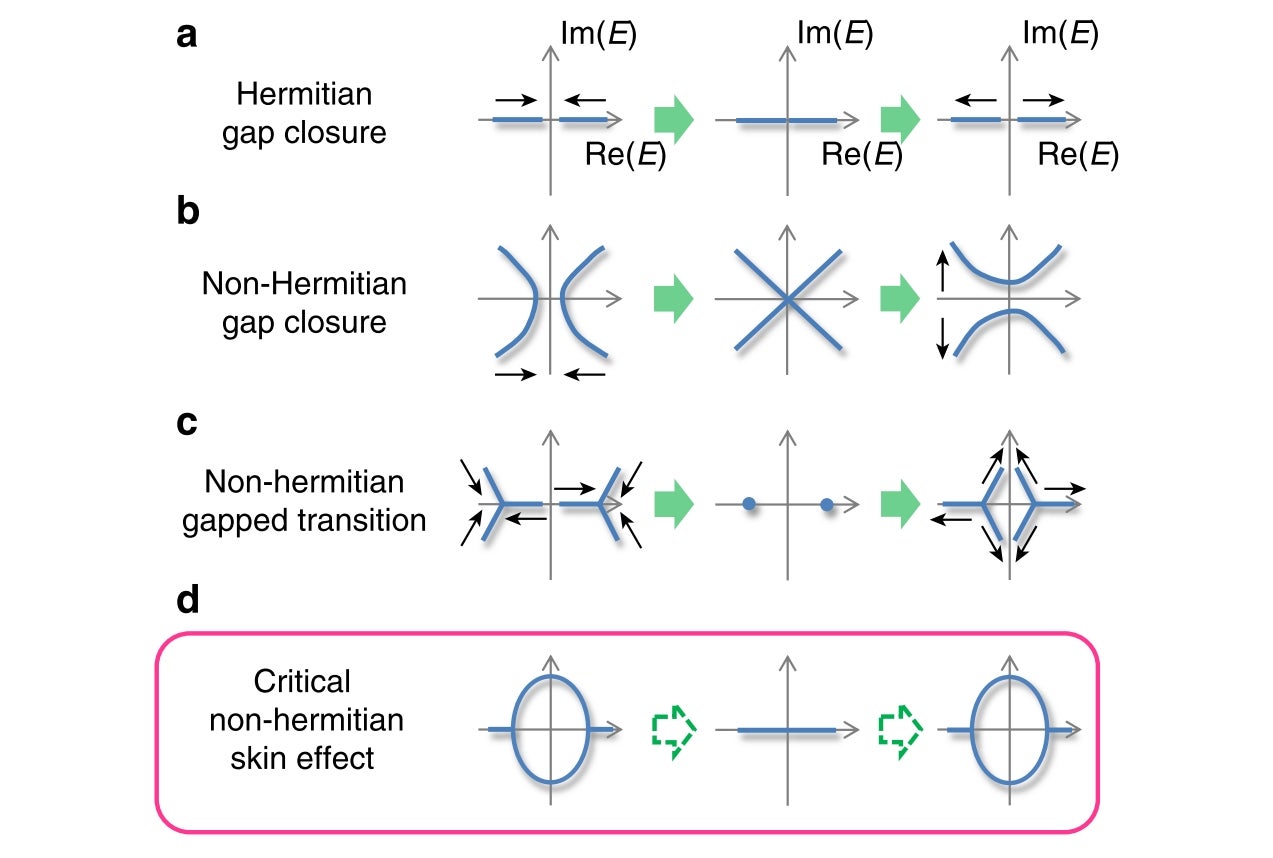A new lesson about phase transitions and criticality
GONG Jiangbin (Group Leader, Physics) December 01, 2020NUS physicists have discovered a theoretical behaviour known as the “Critical Skin Effect” influencing how changes between different phases of matter occur.
Phase transitions are ubiquitous in the world around us, encompassing common processes such as freezing and evaporation. Of particular interest are second-order phase transitions, where the system at the transition point reaches a so-called critical state characterised by long-range order and extreme susceptibility to disturbances. A paradigmatic example is the ferromagnetic transition, where correlated spin clusters grow larger and larger as temperature is lowered, until they coalesce into a single ordered phase with all spins pointing in the same direction. Due to its universal and intuitive appeal, the concept of criticality has also permeated other fields like the modelling of financial market crashes. As a theoretical concept, criticality has also inspired advances in deep topics like conformal field theory, percolation and fractals.
A research team led by Prof GONG Jiangbin and Prof LEE Ching Hua, both from the Department of Physics, NUS has discovered a new form of critical behaviour known as the “Critical Skin Effect” (see Figure). This discovery extends the scope of known critical phase transitions to non-equilibrium systems which, unlike conventional equilibrium systems governed by unitary time evolution, are open systems that experience gain or loss due to their external interactions. Lately, it has become widely recognised that non-equilibrium systems can experience dramatic directed long-range amplification that changes the qualitative nature of the system, in a new phenomenon known as the non-Hermitian skin effect (NHSE). This inspired the research team, which includes Dr LI Linhu (who recently joined Sun Yat-sen University (Zhuhai), China) and Mr MU Sen (PhD student), to ask how the interplay between the NHSE and critical state can result in new physics.
The team discovered that in a non-equilibrium system, even changing system size can profoundly affect its state. For instance, a system can be insulating (gapped) at small sizes, but metallic (gapless) at larger sizes. Or, it can possess topological modes for certain system sizes but not others. This observation is counterintuitive, since we typically do not expect the introduction of additional sites to change the qualitative nature of the state, just like a magnet should not spontaneously demagnetise if we cut it in half. Furthermore, the very concept of the thermodynamic limit is now brought into question, since there exists a new class of states that will become invariably altered as the system size is increased to infinity.
Prof Lee, who first connected the dots between the seemingly paradoxical numerical evidence, explained, “The “Critical Skin Effect” provokes a paradigm shift in how we think about critical behaviour and long-range order. When non-equilibrium effects contribute their share of long-ranged influences, we are forced to reformulate certain concepts usually taken for granted, such as the so-called generalised Brillouin zone.”
Interestingly, critical skin states can even exhibit scale-free behaviour while decaying exponentially in space, contrary to conventional critical states which are almost synonymous with power-law spatial decay. They also possess unusual size-dependent entanglement entropy behaviour, challenging usual approaches for characterising critical states through their entanglement entropy scaling.
Prof Gong said, “In the past several years, studies of non-Hermitian phenomena from the perspective of condensed-matter physics have increased significantly. Given that even a well-known concept like critical states can now assume new meanings, we cannot afford to limit our imagination about what can come next.”
Beyond its theoretical interest, this discovery is also relevant to sensing and switching device applications. For instance, a sensing circuitry can be programmed to detect different types of signals as its effective length is varied through switches. As a proof-of-principle, the team is currently planning to demonstrate this new type of critical phase transition through electronic RLC circuits, where the detailed spectrum can be mapped out through “topolectrical” impedance measurements.

Figure shows a variety of phase transition behaviours in Hermitian and non-Hermitian systems. The left and right columns show the system’s spectra on both sides of the transitions, while the middle column shows the intermediate (critical) spectra. (a) Typical Hermitian phase transitions consist of the closure of the spectrum along the real line. (b-d) In non-Hermitian systems, the phase transition can occur via different distinct manners in the complex energy plane. In the “Critical Skin Effect”, the intermediate critical spectrum is not even deformable to the spectrum before and after. [Credit: Nature Communications]
Reference
Li L*; Lee CH*; Mu S*; Gong J*, “Critical non-Hermitian Skin Effect” NATURE COMMUNICATIONS Volume: 11 Article number: 5491 DOI: 10.1038/s41467-020-18917-4 Published: 2020.


